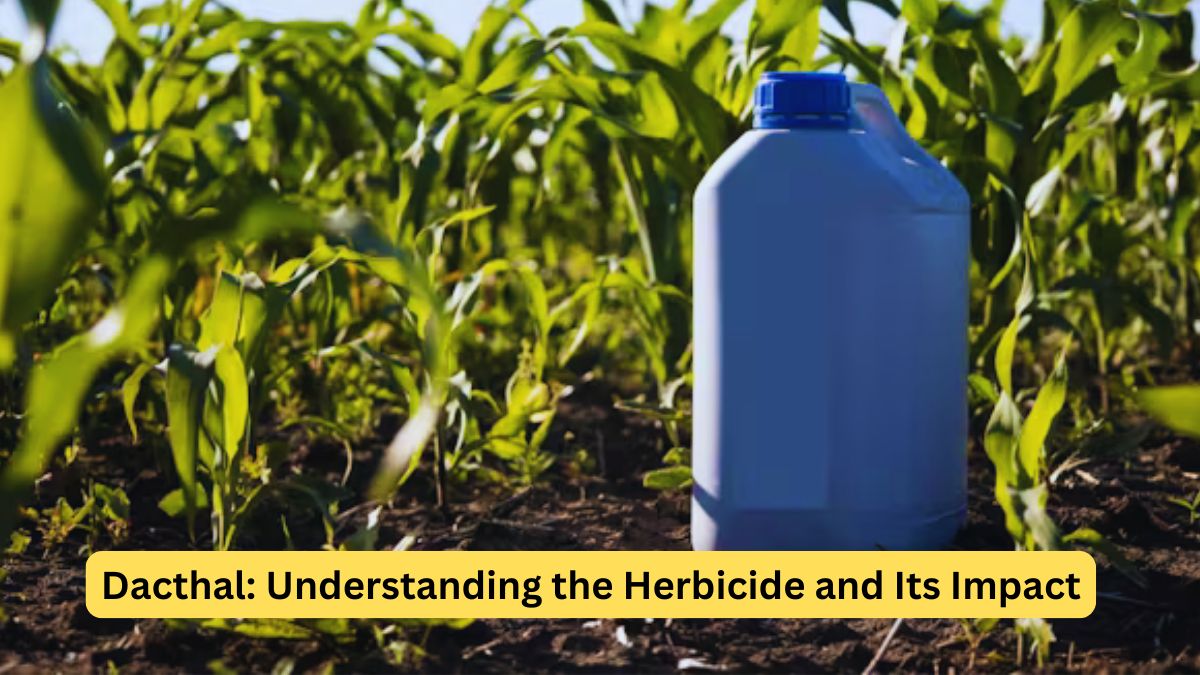Dacthal, scientifically known as dimethyl tetrachloroterephthalate (DCPA), is a pre-emergent herbicide widely used in agriculture and horticulture to control the growth of unwanted weeds. Introduced in the 1950s, Dacthal has been a valuable tool for farmers and gardeners in managing weed populations without harming desired crops. This article explores Dacthal’s usage, benefits, potential risks, and regulatory status.
How Dacthal Works
Dacthal is applied to the soil before the emergence of weeds. It works by inhibiting the growth of weed seedlings, effectively preventing them from developing into mature plants. This selective herbicide is absorbed by the roots of germinating weeds, disrupting cell division and preventing proper root and shoot growth. Dacthal is particularly effective against annual grasses and broadleaf weeds.
Uses of Dacthal
Agricultural Applications
Dacthal is commonly used in various agricultural settings. It is effective in controlling weeds in crops such as:
- Vegetables: Including onions, carrots, and brassicas (cabbage, broccoli, etc.).
- Fruits: Especially in orchards and vineyards.
- Field Crops: Like soybeans and cotton.
By reducing weed competition, Dacthal helps improve crop yield and quality.
Horticultural Uses
In horticulture, Dacthal is used in:
- Nurseries: To keep weed populations in check, ensuring healthy plant growth.
- Turf Management: In golf courses, parks, and lawns to maintain pristine conditions.
- Ornamental Gardens: To protect flowers and shrubs from invasive weeds.
Benefits of Using Dacthal
Effective Weed Control
One of the primary benefits of Dacthal is its ability to provide effective weed control. By targeting weeds before they emerge, Dacthal reduces the need for post-emergent herbicides, which can be more damaging to crops and the environment.
Crop Safety
Dacthal is selective, meaning it targets weeds without harming the desired crops. This selectivity is crucial for maintaining crop health and ensuring high yields.
Long-Lasting Protection
Dacthal provides long-lasting protection against weeds, reducing the need for frequent reapplication. This longevity makes it a cost-effective solution for farmers and gardeners.
Environmental and Health Concerns
While Dacthal offers numerous benefits, it is essential to consider its potential environmental and health impacts.
Environmental Impact
Dacthal can persist in the environment, particularly in soil and water. It is relatively stable and can remain active for several months. This persistence raises concerns about its potential impact on non-target organisms and ecosystems.
- Soil Health: Prolonged use of Dacthal can affect soil health by altering microbial communities and nutrient cycling.
- Water Contamination: Dacthal can leach into groundwater or runoff into surface water, posing risks to aquatic life. It is essential to follow proper application guidelines to minimize this risk.
Human Health Risks
Dacthal is considered to have low toxicity to humans when used correctly. However, improper handling and exposure can pose health risks.
- Skin and Eye Irritation: Direct contact with Dacthal can cause skin and eye irritation. It is essential to use protective clothing and equipment during application.
- Inhalation Risks: Inhaling Dacthal dust or vapors can lead to respiratory issues. Using appropriate respiratory protection is crucial when handling the herbicide.
Regulatory Status and Guidelines
Due to its potential environmental and health impacts, Dacthal is subject to regulatory oversight in many countries. Regulatory bodies, such as the Environmental Protection Agency (EPA) in the United States, establish guidelines for the safe use of Dacthal.
Application Guidelines
- Dosage: Follow recommended dosage rates to ensure effective weed control while minimizing environmental impact.
- Timing: Apply Dacthal before weed emergence for optimal results.
- Protective Measures: Use appropriate protective gear, including gloves, goggles, and respirators, when handling and applying Dacthal.
Monitoring and Reporting
Regulatory agencies may require monitoring of Dacthal residues in soil and water to assess environmental impact. Reporting any adverse effects on human health or non-target organisms is also essential for regulatory compliance.
Alternatives to Dacthal
Given the potential risks associated with Dacthal, exploring alternative weed control methods is worthwhile. Some alternatives include:
Mechanical Weed Control
Mechanical methods, such as hoeing, tilling, and mowing, can effectively manage weed populations without chemical inputs. These methods can be labor-intensive but are environmentally friendly.
Biological Control
Biological control involves using natural enemies of weeds, such as insects, fungi, or grazing animals, to reduce weed populations. This method is sustainable and can be integrated into an integrated pest management (IPM) approach.
Organic Herbicides
Organic herbicides, derived from natural sources, offer a safer alternative to synthetic herbicides like Dacthal. These products may be less persistent in the environment and pose fewer health risks.
Conclusion
Dacthal has been a valuable tool for farmers and gardeners in managing weed populations for decades. Its effectiveness, selectivity, and long-lasting protection make it a popular choice in various agricultural and horticultural settings. However, the potential environmental and health risks associated with Dacthal underscore the importance of proper application and handling.
Regulatory guidelines and alternative weed control methods play a crucial role in mitigating these risks. By following best practices and exploring sustainable options, we can ensure effective weed management while protecting human health and the environment.
Understanding the complexities of herbicides like Dacthal is essential for making informed decisions in agriculture and horticulture. As we move towards more sustainable farming practices, balancing the benefits of chemical herbicides with their potential risks will be key to achieving long-term environmental and agricultural sustainability.
